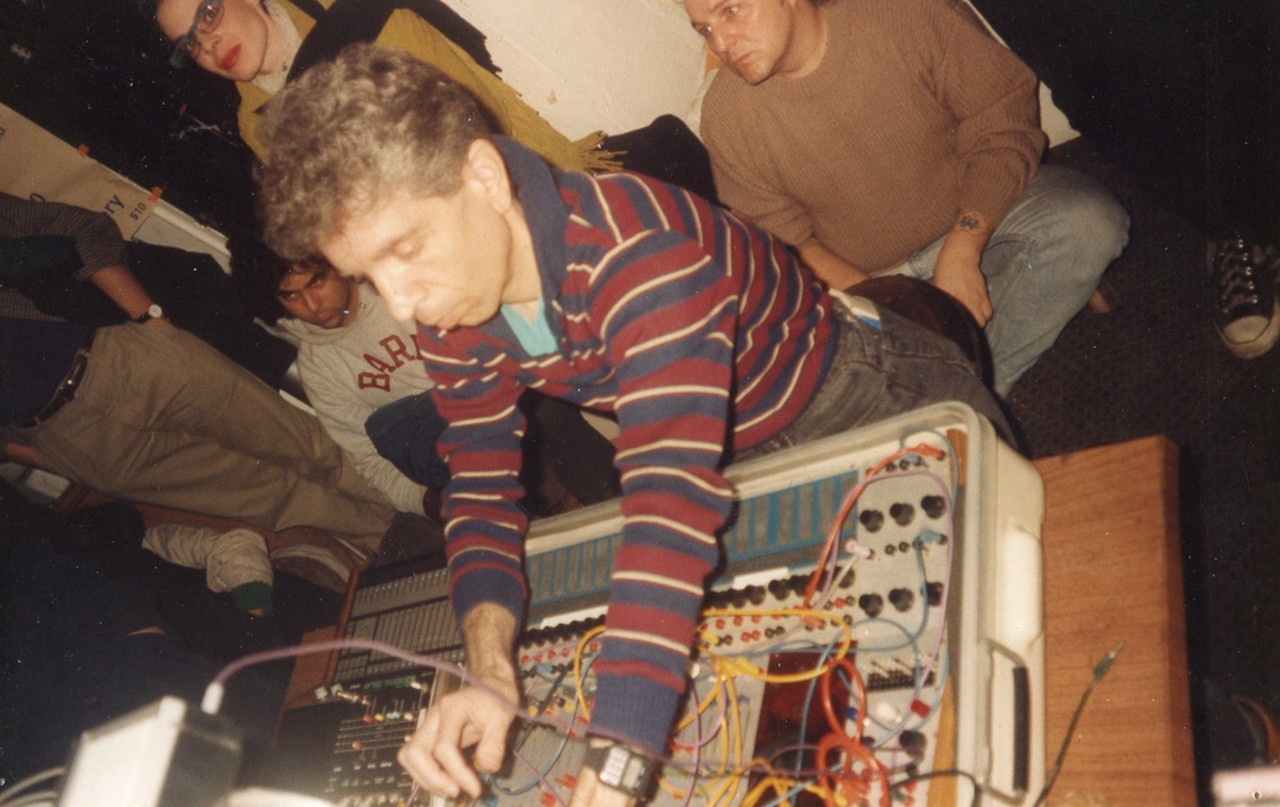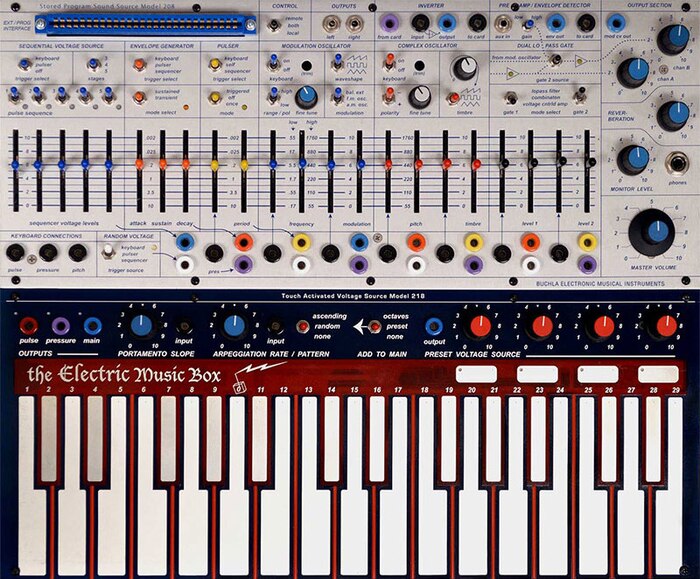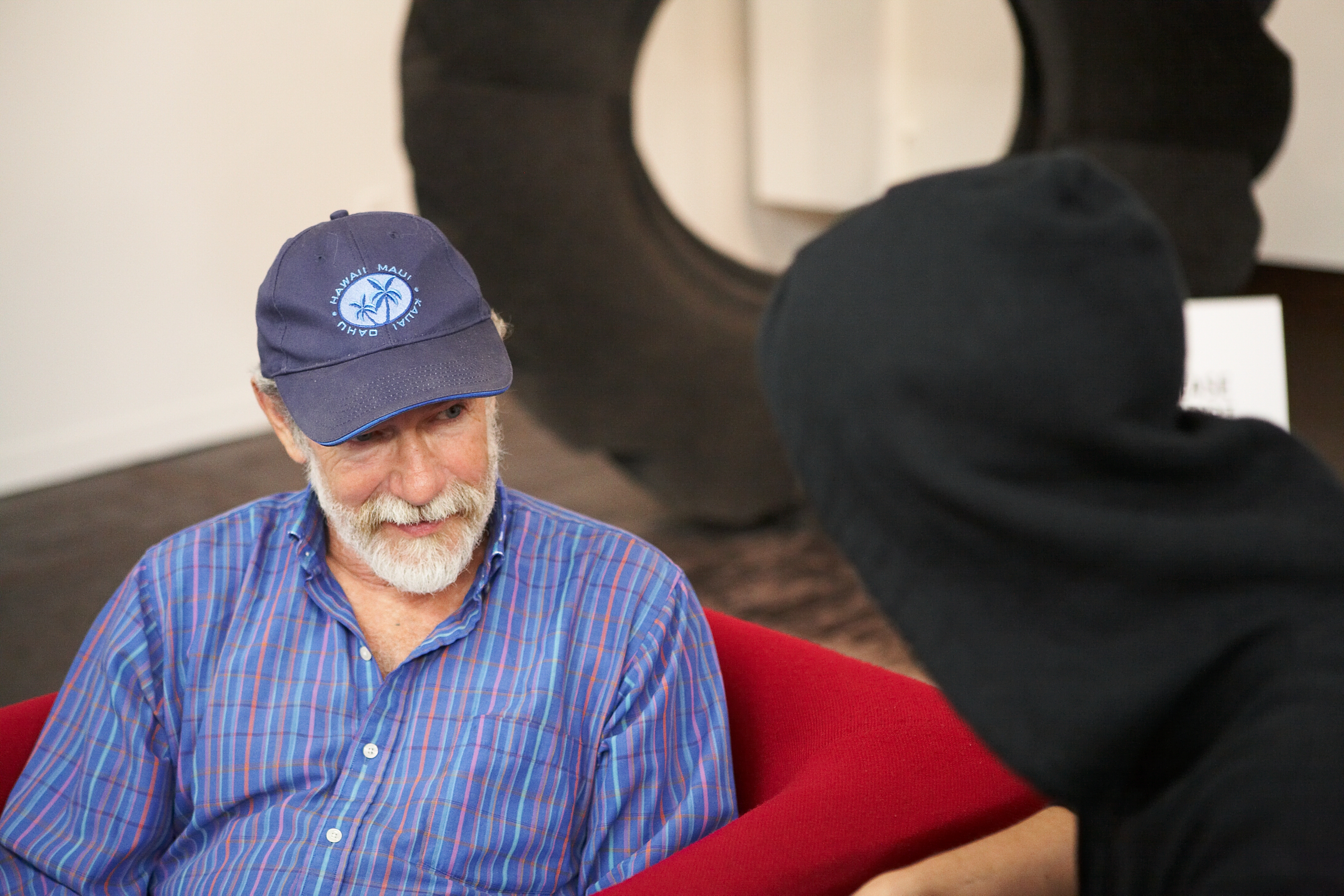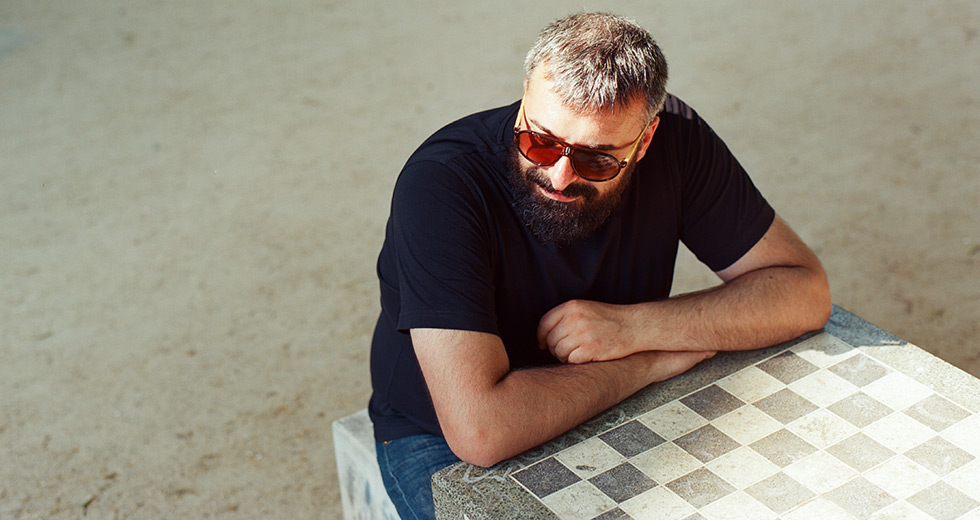Charles Cohen on improvisation, the Buchla and his rediscovery
The master of the Buchla Music Easel walks us through his multi-faceted career
Philadelphia-based musician Charles Cohen has built a world-wide reputation for his synthesized improvisations and collaborations, where he aims to respond to his co-players “quickly, honestly, playfully and intuitively.” Armed with his Buchla Music Easel, a rare synth from the 70s made by synth pioneer Don Buchla, Cohen has developed a unique and special voice in music, and his self-termed “beeps and boops” has been inspired by masters of modern improv like Pauline Oliveros and Cecil Taylor.
As well as his frequent team-ups with media artists across the world, Cohen has risen to further prominence thanks to Morphosis and his Morphine label, with four albums of experimental electronics that appeal to techno lovers and noise fans as much as the avant-garde. In this excerpt from his recent RBMA Radio interview, Cohen explores all that and more.

Beginnings
My parents were in the broadcast and media and advertising world. That has a lot to do with how I got into electronic music, because I’ve been around studios, audio equipment and recording equipment all my life. When synthesizers came along, I just felt totally at home.
We were the first family on the block to get a tape recorder. I was utterly fascinated. You have to understand, in those days, that was really an unusual activity. This whole idea of being able to record at home was brand new. I just found that whole process of electronics and audio so fascinating.
Eventually, I was working as a sound designer in a theater department in a big college in Philadelphia. Across the street, the music department got one of the first big Moogs, and they didn’t know what to do with it. It was considered a big, fancy music school, so they just had to have one. Nobody used it. The professor who was in charge of it didn’t even know how to turn it on. I said, “Well, I can probably do something with this.” I started playing with it and I loved it.
Dance & Jazz
There was a long period of time when I was doing scores for modern dance. That was, again, a little different, a little more constrained, because you had to work with the movement and the breathing ability of the dancers. The company I got involved with was Group Motion. They were from Berlin, and had moved to Philadelphia. They came to the theater where I was working as a sound technician and they started putting their show together, and it was all electronic music. The kind of thing I had never heard before. I was into electronic music, but I had no idea that there was a scene for it like there was in Berlin. When I heard it, I was dumbfounded that all this was happening.
I got exposed to a whole way of thinking that I’d never known before. I ended up working with them for maybe ten years, doing sound for their pieces. First, I started making tapes and then it gradually evolved into playing live for them. Usually, the choreography would come first or at least be partially developed and I would come into rehearsal and start working with what I was seeing.
It’s been an evolution from structure to no structure.
Eventually I stopped doing that too, because the total time involved was so great. Dancers love to rehearse and rehearse and rehearse. By the time the performance came around, I was bored with the pieces. Then I started gravitating toward pure improvisation. I just show up, I play, and I forget it. It’s efficient. There’s no rehearsing. The only preparation I do is technical preparation. It’s been an evolution from structure to no structure.
When I was starting to get into the music scene in Philadelphia, I met some free jazz, progressive jazz musicians. I found that fascinating because they’re very much open to improvisation. They love sound, and they immediately enjoyed the sounds I was making. I did that for many years, playing with mostly free jazz artists. That taught me a lot about improvisation and performance.
The Music Easel
It wasn’t until I heard my first Morton Subotnick album that I thought to myself, “These are sounds that I really want to work with.” That was the beginning of a big change for me. Finding out what he was using, how to get it and finally getting it. That process took several years, actually. It was a while before I was able to figure out, “Oh, he’s using Buchla Synthesizers. Okay, who’s Buchla? Where is he?” I wrote to Buchla and I asked for a catalog. One year later, nothing. I wrote another letter, “Could I please have a catalog of your instruments?” Another year went by. A catalog showed up. I realized it was too complicated to try him by mail. So I took a trip out to California and met Don Buchla. I looked at his stuff, and I was sold. I emptied out my life savings and bought a bunch of stuff. That was about 1976.
I looked at it all. E-MU had a big modular system that was very nice. Arp and Moog, of course. There was even some Roland stuff. At first glance you’d think, “My God, this Buchla stuff is expensive.” But then I thought, “If you price it by dollars per function, it was actually cheap because he crammed so much functionality into every module.”

A Music Easel was in that first batch of stuff I bought. It’s a modular system. It’s a large studio console with these individual modules that perform different functions. Two of the modules can be taken out of the big system and put in their own small box, and then it becomes a Music Easel. I did that at a certain point because I was carrying around that big system when I went out and it got to be too much.
I’ve been pretty much just focusing on the Easel now for at least 20 years. It still works. Not without a little hassle. I’ll always fixing something. Always have to fix something. Every trip to Europe, I get off the plane, I go to the hotel, I take it apart and I look for what broke on the flight and get it in shape for the gig, which is coming up. Although I must say, this last trip, nothing broke. I’m really surprised. You can’t even find a toaster oven that’s 40 years old that still works.
Don Buchla did work for NASA, he told me. I have a feeling that some of that rubbed off on him as far as a construction technique. It’s really solid, the way it’s built. I think that made a difference, first class parts. If you’re building a satellite, once it goes up, that’s it. If it breaks, you’re out of luck. It can’t be fixed. I have a feeling there’s a little bit of that attitude in Buchla’s instruments of this time period.
Playing Live
In my personal opinion, studio work is about perfection and precision. Live work is about energy and dynamics. That’s what I like. I just don’t have the patience for studio work. Doing something over and over or going back and trying to make something perfect. I like the constantly flowing aspect of live performance. No time to reconsider what you just did.
There have been times when I’ve tried recording improvisations and then going back in a studio and trying to edit them. I find I can’t make post-production choices. Everything either sounds good or everything sounds horrible. I can never make up my mind what to do with this stuff.
When I’m playing live, I don’t think about whether it’s good or not. I just keep going. I flow with the energy of the moment and I try not to be judgmental. In the studio, you have to be judgmental and that’s difficult for me. I don’t seem to have a reference point for saying, “This is better than that” and “That’s better than this.” In a live situation, you know when things are working. You may not know why, but they’re working. You feel it. That’s all I need to know.
Advice
I’ve had some teachers. My teachers are, for the most part, people I played with, people I interact with. I didn’t really study formally.
Brigitta Herrmann from Group Motion was my first improvisation teacher. I remember she used to say, “Charles, in improvisation, the first impulse is always the correct one.” That’s something I’ve taken to heart. It sounds simple, [but it’s] easier to say than to do because we are self-critical. That self-criticism can inhibit spontaneity.
The second teacher that I got a lot from was Craig Anderton. One day I was over at his house and I said, “Well, I don’t really know how to play. I don’t call myself a musician. I just make noises and it’s fun. That’s all.” He said, “Okay, let’s try this.” He pulled out a cool sounding electronic harpsichord of the era and he said, “I’ll play along with you. Don’t worry about what it’s supposed to be. Just have fun. But number one, listen. Listen to what I’m doing. Listen to what you’re doing. Don’t stop listening, no matter how much you get into the playing.”
My third lesson was from Sun Ra. I thought electronic music wasn’t appropriate for live performance because it was elaborate and technical and difficult. Then I saw Sun Ra. He lived and played in Philly a lot. When I saw him play the Mini Moog, it was like, “Ahhhhh!” I can’t, to this day, tell you exactly what he was doing. It was his attitude about the instrument. It was not a collection of notes to him. It was a sound source.
The next big influence was Cecil Taylor. When I saw him play for the first time, his hands on the keyboard were a blur. I couldn’t see what he was doing. I realized he was no longer playing notes. He was playing sounds. He was making the piano, to my way of thinking, into a synthesizer. That idea of taking a chromatic instrument and transforming it into a sound-producing device was a big revelation to me.
Finally, my most recent teacher is Pauline Oliveros. She has a whole philosophy about deep listening. That has to do with the attention that you give to sound. You try and listen to everything and, when you perform, you’re informed by the entire sound environment. Not only what you’re doing, what other people are doing, but the sound of what you’re doing in the room, the acoustics of the room, the environmental sounds, everything. You use your intuition to let that all that information inform what you’re playing. She’s been a great influence on me.
Rediscovery
The one piece that actually triggered this whole second wave of activity of mine in recent years was called Dance of the Spirit Catchers. That was a studio piece multi-track. Very rhythmically oriented. People tell me it sounds like proto-techno. We’re talking 20 years before techno. In actuality, it’s for a dance piece. This particular piece was called the “Dance of Cyclops.” It was the place where the hero throws the spear and puts out his eye. We eventually put it on a record just because we thought it was good.
Fast forward about 20 years, Mr. [Rabih] Beani hears this and says, “Charles, would you mind if I reissue that?” I said, “Fine. Go ahead.” He asked, “Do you have any more like that?” I said, “Yes. I have a closet full of stuff like that.” He said, “Send it all to me.” I did. He liked it and he decided he wanted to put it all out, which stunned me. I didn’t know what to say except yes. It came out as four albums. I was stunned to find that the whole series sold out and was successful. Amazing.
I never expected that kind of future life for any of this music. Most of it was for a dance or theater production. Once that production was over, it went into the closet and disappeared and I never thought about it again. I almost threw out all that stuff. I figured, “Well, what use is this?” Thank God I didn’t.

